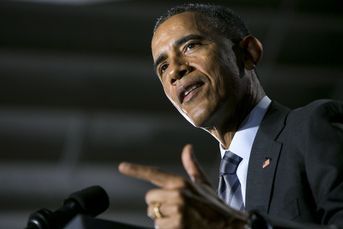Would you like to do the contango?
As we discussed last month, futures-based ETFs may generate considerable tax-related confusion
As we discussed last month, futures-based ETFs may generate considerable tax-related confusion.
And as I learned from financial advisers since that column appeared, there is also considerable confusion about how commodities-futures-based exchange-traded funds actually work and why their price differs from spot and futures commodities prices.
Let’s look at futures pricing.
A futures price is derived by taking today’s spot price and adjusting it for prevailing interest rates.
For example, if the spot price of gold is $1,000 an ounce and one-year T-bills are yielding 5%, a one-year gold future trades at $1,050. The $50 difference in price is due to the time value of money: The price reflects the fact that buyers of futures don’t tie up capital as would a cash purchaser.
Similarly, as the futures contract nears expiration, its price declines, all things being equal.
When futures prices are higher than the current spot price, a commodity is considered to be trading in contango. Not all futures trade this way.
If the futures price is lower than the current spot price, the commodity is said to be trading in backwardation. In such cases, investors generally will observe the futures price rising over the time to expiration, instead of deteriorating, as in contango.
Trading in each commodity future can change from contango to backwardation as expectations and supply and demand force change.
Cotton, for example, trades in backwardation because of supply constraints. For many years, oil also traded in backwardation, but now that supply is no longer an issue, oil trades in contango.
Oil is a major component of many commodities indexes, and the change from decades of backwardation to contango should be looked at in evaluating the research that draws investors to commodities.
In addition to interest rates, futures prices are influenced by expectations about the underlying commodity.
For example, the VIX index, which measures stock market volatility, is trading at 151/2, while the September VIX futures contract is at 22, reflecting expectations of higher equity volatility in the future.
Remember the Yale University white paper that brought so much attention to the benefits of adding commodities to a portfolio?
Investment guru William J. Bernstein observed that commodities returns are much less impressive once you adjust for the difference between the backwardation that prevailed during the period studied and today’s contango.
He found that without backwardation, the return would be 6.66%, not the 11.18% reported in the Yale paper.
Investing in ETFs that use futures without understanding contango and backwardation is like betting on a football game without knowing the point spread.
Look at the futures prices of different month expirations. If the price is higher for longer-term contracts, that commodity is trading in contango, and you are giving up points.
If you subtract the price of the nearest-term contract from the price of the longer-term contract, you can calculate just how many points you are giving up.
Recently, for example, oil futures for March delivery were trading at $85.58, and June contracts were trading at $94.14. That $8.56 difference was what an investor would lose over three months if oil just stayed where it was.
The opposite economics would accrue to the short-seller of the oil-futures-based ETF.
Because commodities-futures-based ETFs are publicly traded limited partnerships that flow through tax attributes monthly, investing in them is the same as investing in futures, which is why investors should know the steps before they come to the dance.
Understanding the steps also may help eliminate the confusion that commodities ETF holders feel when they receive their K1 forms.
Unlike most other ETFs and mutual funds, commodities-futures-based ETFs are publicly traded limited partnerships that flow through tax attributes monthly.
That legal structure can help explain the tax bill. Understanding contango and backwardation can help explain why the prices of commodities-futures-based ETFs aren’t always in sync with spot prices.
Robert N. Gordon is chief executive of Twenty-First Securities Corp. and an adjunct professor at New York University’s Leonard N. Stern School of Business. He can be reached at [email protected].
For archived columns, go to InvestmentNews.com/taxconsciousadviser.
Learn more about reprints and licensing for this article.





